First introduced at the end of 2022, the latest iteration of Pivot's long-travel full-powered eMTB has undergone a number of refinements for 2025 and beyond. Starting with an all new powertrain, subtle changes to visual features, build kit options and wheel sizes, the Shuttle LT builds on the success of an already proven platform. The Shuttle LT is the long travel variant of Pivot’s full power eMTB platform and encompasses what the biggest baddest version of a pedal assist mountain bike should be, and the refinements made further enhance that mantra to help the bike feel more at home on descents and rip back up even faster.
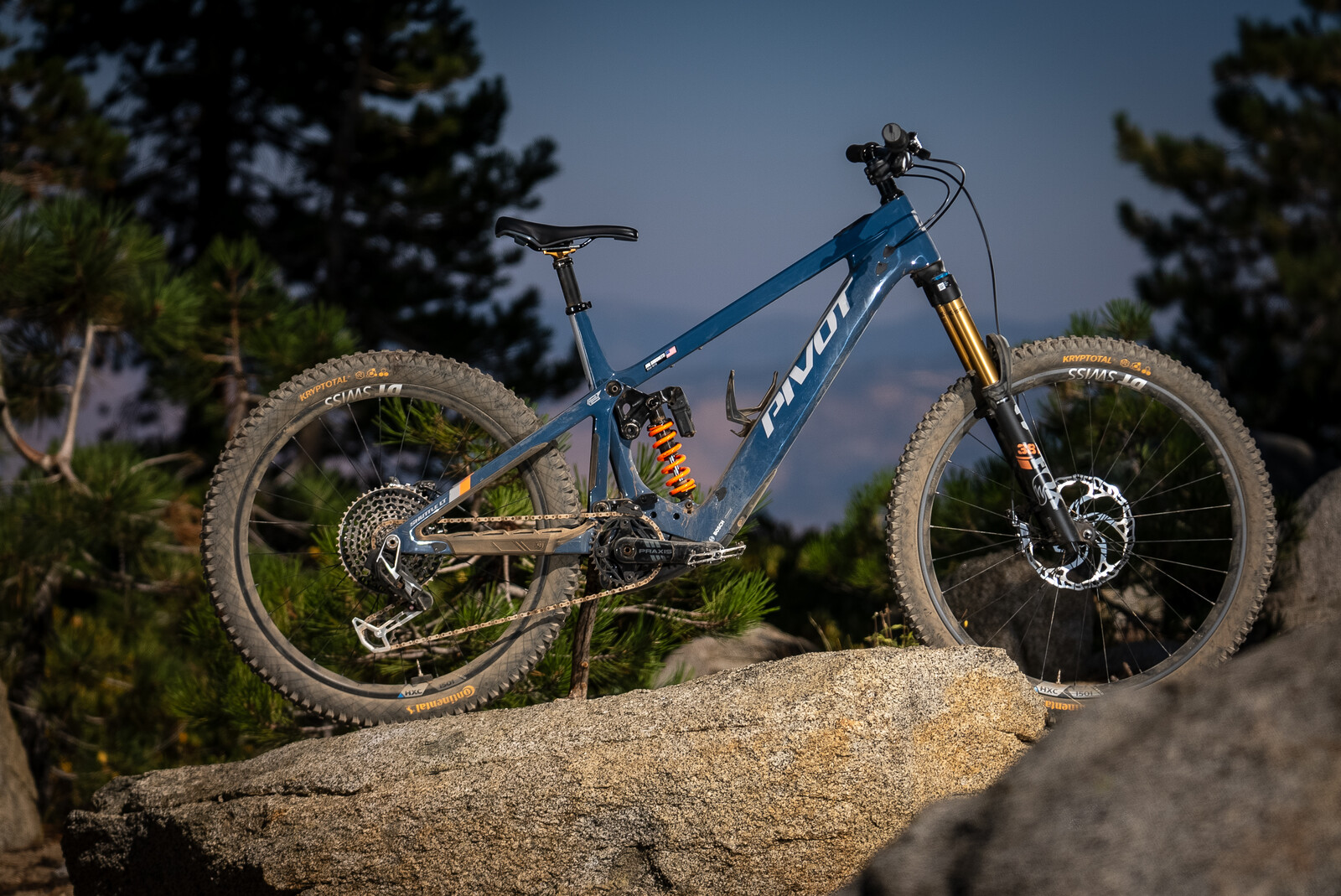
Highlights
- Full carbon frame
- 27.5 // 29-inch mixed wheel configuration (29-inch rear wheel compatible)
- 160mm rear wheel travel // 170mm fork travel
- 64-degree (high w/ 27.5 rear wheel) // 64-degree (low w/ 29-inch rear wheel) head tube angle
- 439mm chain stay length across all sizes
- Size-specific seat tube angles
- DW Link suspension design
- Bosch CX Race Motor in every build spec option
- Top tube mounted display w/ integrated controller
- Wireless bar-mounted controller
- Molded rubber frame protection
- Internal cable routing
- Battery removable with removal of motor
- Shimano and SRAM drivetrain options
- FOX Suspension with Air and LiveValve Neo Coil shock options
- Sizes: S-XL (Accommodates riders from: 5' 3" to 6' 7")
- MSRP: $8,699 - $12,999 ($1,500 LiveValve upgrade, $525 Bosch 250Wh PowerMore Range Extender)
- Weight: 49.7lbs (22.5kg) as tested (size XL no pedals)
What’s New?
The most notable change from the previous generation bike is the switch to a Bosch Performance CX Race Limited Edition motor and battery from the Shimano EP801 motor and battery. The system ditches many of the wires the Shimano system used for a much cleaner look with an integrated top-tube display and optional wireless bar-mounted remote. The primary changes around frame construction involve packaging the new drive unit, a clever solution for mounting the battery and creating a more vertical shock orientation.
The bike maintains the same geometry numbers as the outgoing model and is still centered around a DW Link suspension platform providing 165mm of rear wheel travel and 170mm up front, but now comes spec’d with mixed wheels. While the previous generation bike has been capable of using mixed wheels all along, you’d need to dig into the FAQ section of the Pivot website for that answer; the new generation bike uses mixed wheels across all sizes with a 2.6” rear tire.
Frame Construction
The new generation bike looks very similar to the outgoing model because it essentially is the outgoing model with some subtle refinements, but there is more than meets the eye. With the new drive unit and battery system, Pivot took the time to improve some key areas they felt were important to focus on. The first being the front end stiffness of the bike where the battery mounted within the frame created a slight interference with the level of torsional compliance they engineered into the tubes. Because the battery can restrict the movement of the frame, the new battery mounts are rubberized to prevent interference with flex profile of front triangle and allows the frame tubes to wiggle and rotate around the battery rather than have it act as a structural component. Pivot did this to prevent the bike from feeling like the front of the bike was on a separate path from the rear of the bike, instead they focus on creating the most consistent flex profile possible from front to rear. The attention to detail consumers have come to expect from Pivot is present throughout with the usual high-torque hardware with clearly labeled torque specs, sleek finish around all tube junctions, and modular cable ports. The lower link has stick on rubberized protection to keep grime out of the linkage and prevent any wedging between the frame and linkage.
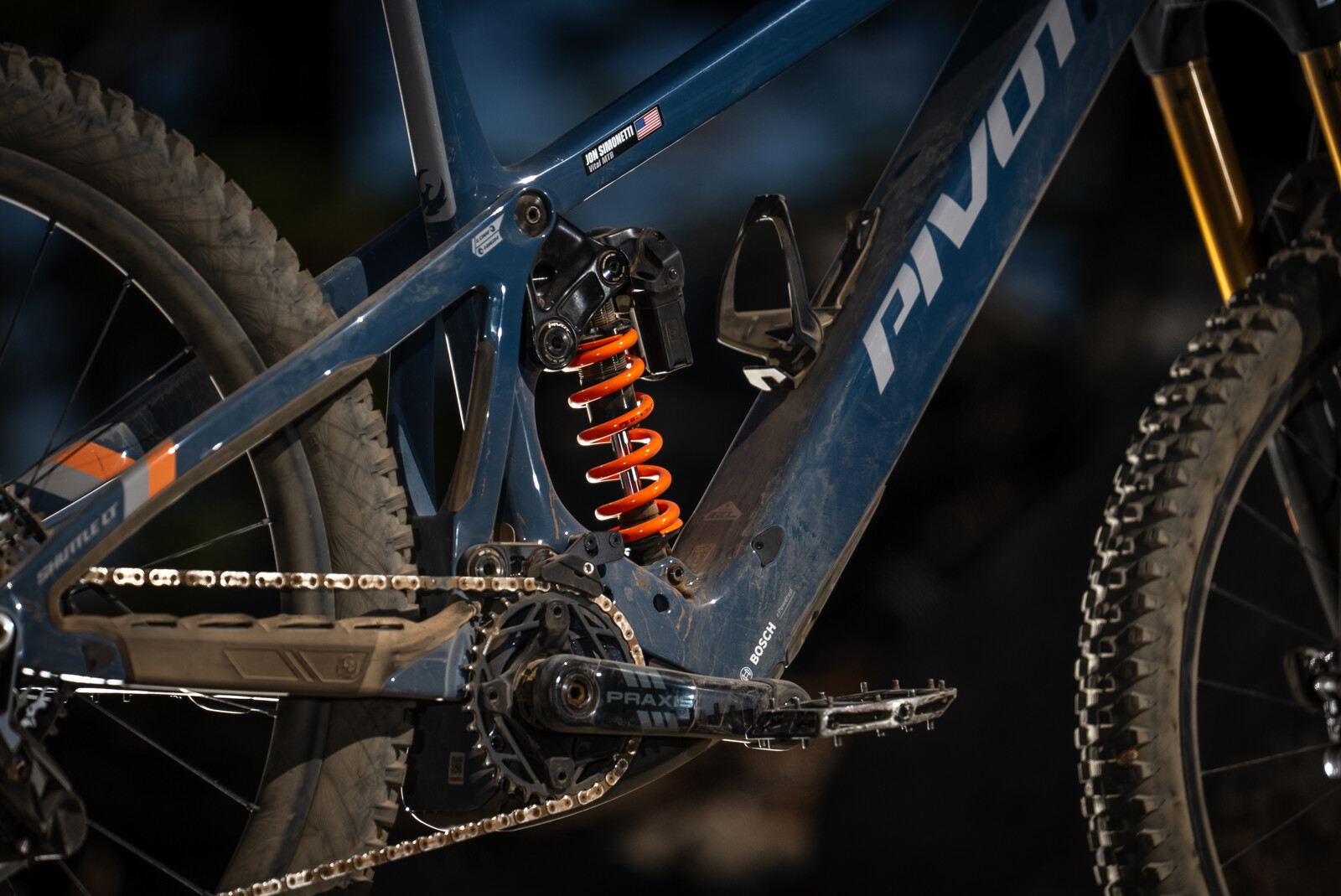
Bosch Drive Unit
While the switch to the Bosch drive unit from the Shimano system of years past may be a bit of a head-scratcher considering they make the same power output, use the same size battery, and weigh roughly the same weight, the on-trail performance is where gains are made. There is no denying the improvements in battery life primarily, but also in the lack of cable required to mount the system and the reduction in noise from the bike while descending. Being the Race variant of the CX Performance line also unlocks the very useful “Race” mode as the highest power output setting for the system, which provides 400% of the input pedaling force in return with a fair amount of roll-off to keep the power more consistent when pedal kicking through sections. This shifts the modes from the standard CX Line up a notch, ditching the Eco mode in favor of the race-focused mode. Instead, the modes available on the Race Line are Tour+, EMTB, Turbo, and Race.
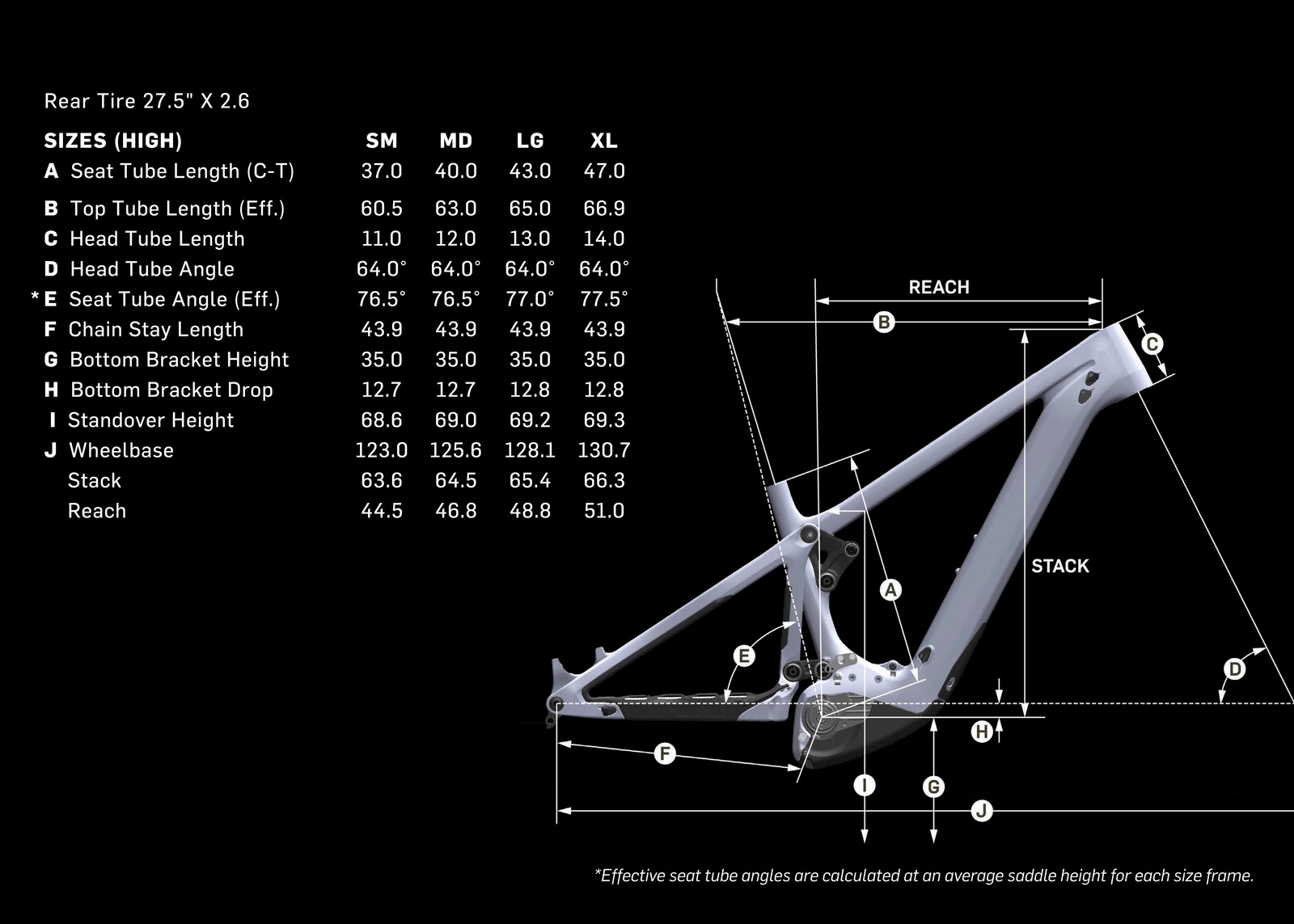
Geometry
Not much to talk about in terms of geometry updates, Pivot left things where they were on the last bike for the most part, no need to reinvent the wheel. Speaking of wheels, the mixed wheel configuration can only be ran in the High BB flip chip setting and comes out to the same angles and dimensions as the bike in the low setting with a full 29inch wheel configuration. With 29-inch wheels in place, the high setting shifts the whole front triangle forward a bit, creating a slightly longer reach and top tube length, steepens the head tube angle by half a degree. I of course had to try the low setting just to know, and the result was a ground scraping bb height and aggressively slack head tube angle which became inherently difficulty to navigate tighter bits of trail and really only felt good for mindless high speed smashing, go figure.

Build Kits
Much of the build kit is unchanged from the previous generation bike, but a new Pro level build kit option is added to the Ride and Team options, and the top-of-the-line drivetrain options shift from Shimano to SRAM T-Type drivetrains. Regardless of spec, every build kit option is spec’d with the Bosch Performance CX Race Limited Edition motor, which will be rather appealing at any of the available price points, which range from $8,699 up to an eye-watering $14,999 with all options. Those options include a $500 Bosch PowerMore Range Extend 250Wh battery range extender to bring the power up to 1000 watts, and the upper-level Team and Pro level build kits open up the options for a $1,500 LiveValve Neo DHX coil rear shock upgrade.
Team XX Eagle Transmission

My test bike came outfitted with the top-of-the-line Team XX Eagle Transmission kit which is higlighted by a SRAM XX T-Type drivetrain, FOX Factory 38 fork, Float X2 rear shock, and 210mm Transfer dropper for the ultimate bling factor. Adding to the bling is a set of Shimano XTR 4-piston brakes with Galfer rotors, DT Swiss Hybrid HXC1501 Carbon wheels, and Continental Enduro casing tires in their soft compound. Rounded out with Pivot's own Phoenix line of components to handle the stem, bar, grips, and saddle, the build kit truly leaves nothing to be desired and looks to be using every bit of that $12,999 price tag. Of course it didn't stop there, Pivot was nice enough to throw in a Fox LiveValve DHX coil shock for me to try as well which would bring the price tag of this bike to a whopping $14,499.
Pro X0 Eagle Transmission
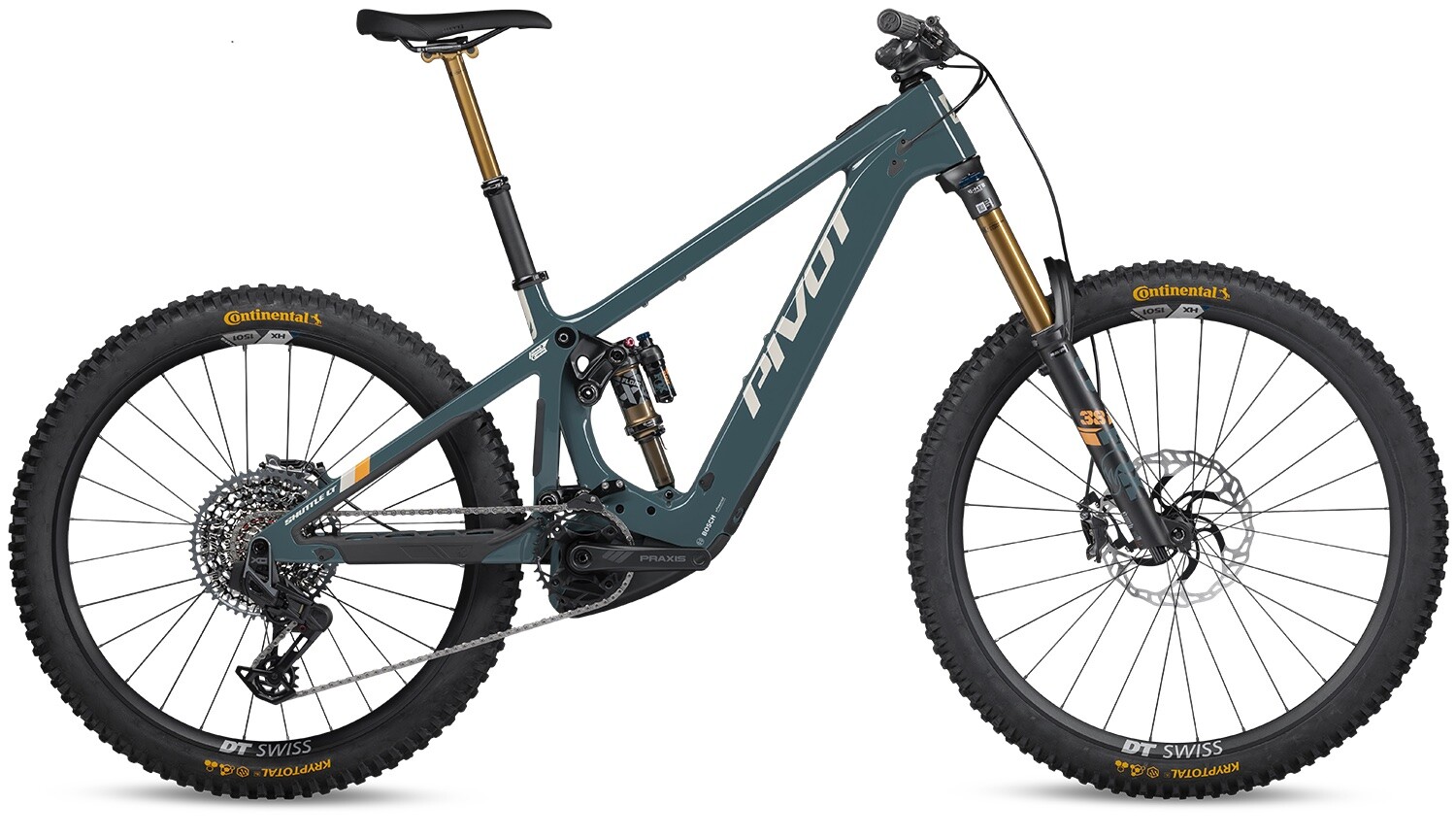
Bumping down to the Pro level build kit maintains many of the same features with the same Factory level FOX suspension, but uses an X0 T-Type drivetrain, Shimano XT 4-piston brakes, and DT Swiss Hybrid HX1501 alloy wheels rather than the carbon option. This brings the pricepoint down to $10,999 and the LiveValve option is still available for upgrade.
Ride SLX/XT
Going to the base-level Ride build kit sees the use of FOX Performance suspension with a 38 up front and a Float X rear shock out back, Shimano SLX 4-piston brakes, and a blend of XT, SLX, and Deore drivetrain components to hit an even lower target price of $8,699. As mentioned, the standout item of this build kit is the same Bosch Performance CX Race Limited Edition motor and battery which allows use of the optional range extender upgrade for an additional $500.
On Trail
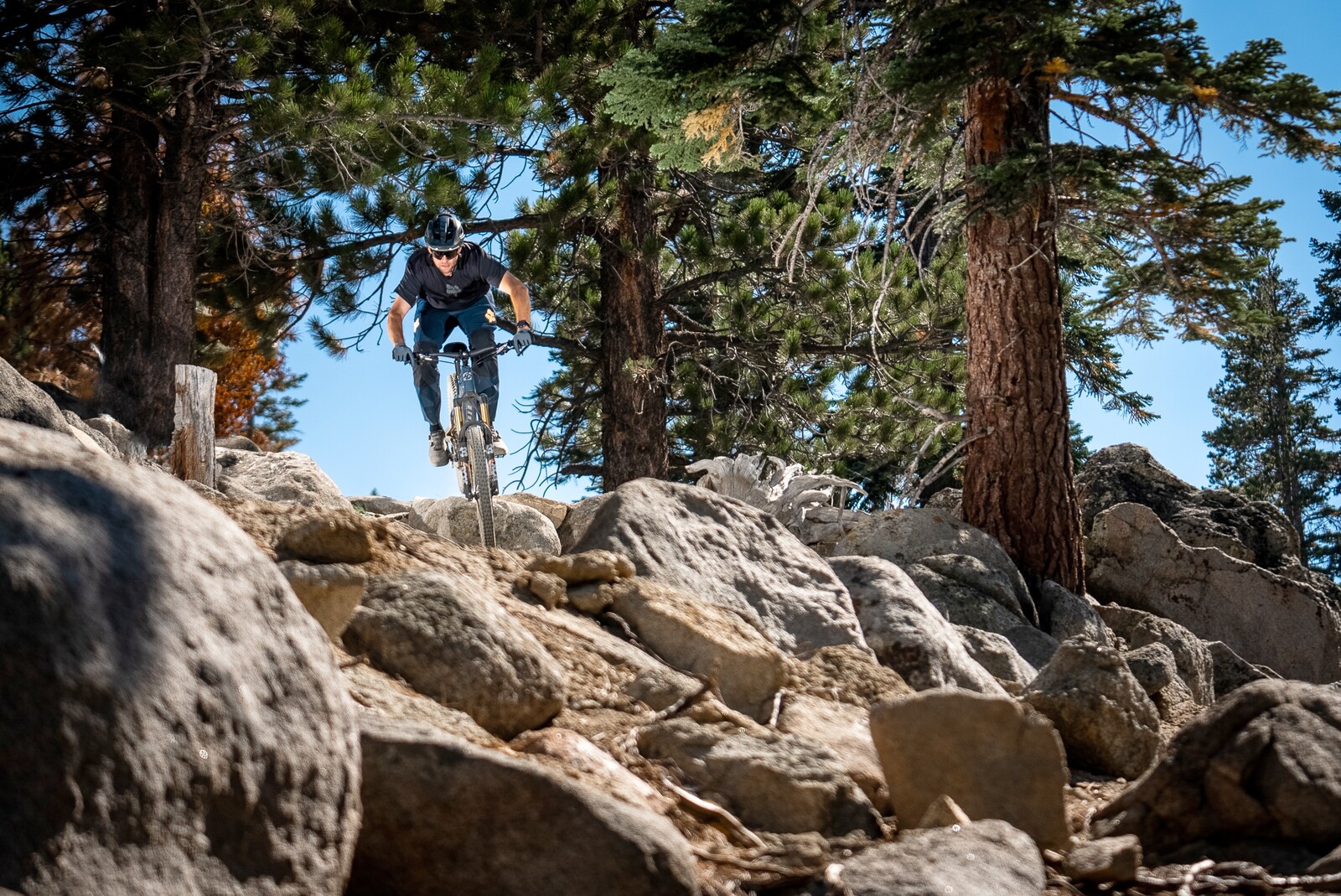
Introduction
I was first introduced to the Shuttle LT in Phoenix, A,Z during the summer, and anyone who has ridden there will know that the summer is not exactly the picture-perfect idea of riding season, but early mornings or late afternoons will do the trick for getting a few laps without suffering in the blistering heat for too long. I met up with Pivot’s Founder and President, Chris Cocalis at around 5am for our ride that had us on the trail just before 6am, and to say I was half awake would be an understatement. After about a minute of taking things slow and watching Chris disappear into the horizon in front of me up a climb I ride regularly, I discovered Race mode. I went from putting out a fair amount of effort to try and keep up to feeling like I was right back in bed relaxing. Safe to say, from day one, Race mode has been my favorite setting by far. As mentioned this mode provides 400% return on pedaling input and it made nearly every climb I did in my time on the bike not only easier but legitimately fun at the same time. Pointed downhill, Chris was nice enough to let me lead things out but I never got far from him despite my best efforts, I found myself braking quite a bit as I hadn’t ridden this particular trail since winter and was struggling a bit with the dry and dusty conditions. However, this served as a great demonstration of the anti-rise characteristics of the bike. With many braking bumps and chattery sections in a row, the bike sat into its travel and never seemed to lift out when mashing on the brakes in a hurry, and the same was true for feathering brakes at high speeds. Moving onto the second trail, where the turns are longer, and the overall speed is higher, I found myself much more comfortable letting off the brakes for longer, and the bike hugged the ground in just about every circumstance. Having ridden the previous generation LT, the biggest difference I noticed was a bit less settled feeling at the rear from the 27.5-inch wheel, but the tradeoff was a bit more nimble handling. This was a great introduction to the bike before I moved on to riding it in Santa Cruz and around Lake Tahoe for the remainder of the test period.
Setup
After my first ride, I got a bit more in-depth with the setup and got the shock in a much happier place, going a bit lower in pressure and further into the range of compression damping. My posture on the bike felt a bit forward and hunched over from the long front end and proportionally short rear; I found myself wanting more pressure over the rear wheel, and the more upright I stood, the better the bike felt. I remedied this with a slightly shorter 42mm stem and taller 31.8mm with an additional degree of back sweep (9-degrees) and was happy with my body position for the remainder of the test. It’s worth noting my size XL test bike came with a very respectable 140mm length head tube, something that every tall rider will appreciate and what I wish more brands would spec on their biggest bikes. With everything in the right place, I was reacquainted with the Shuttle LT in Santa Cruz, CA for the second leg of testing.
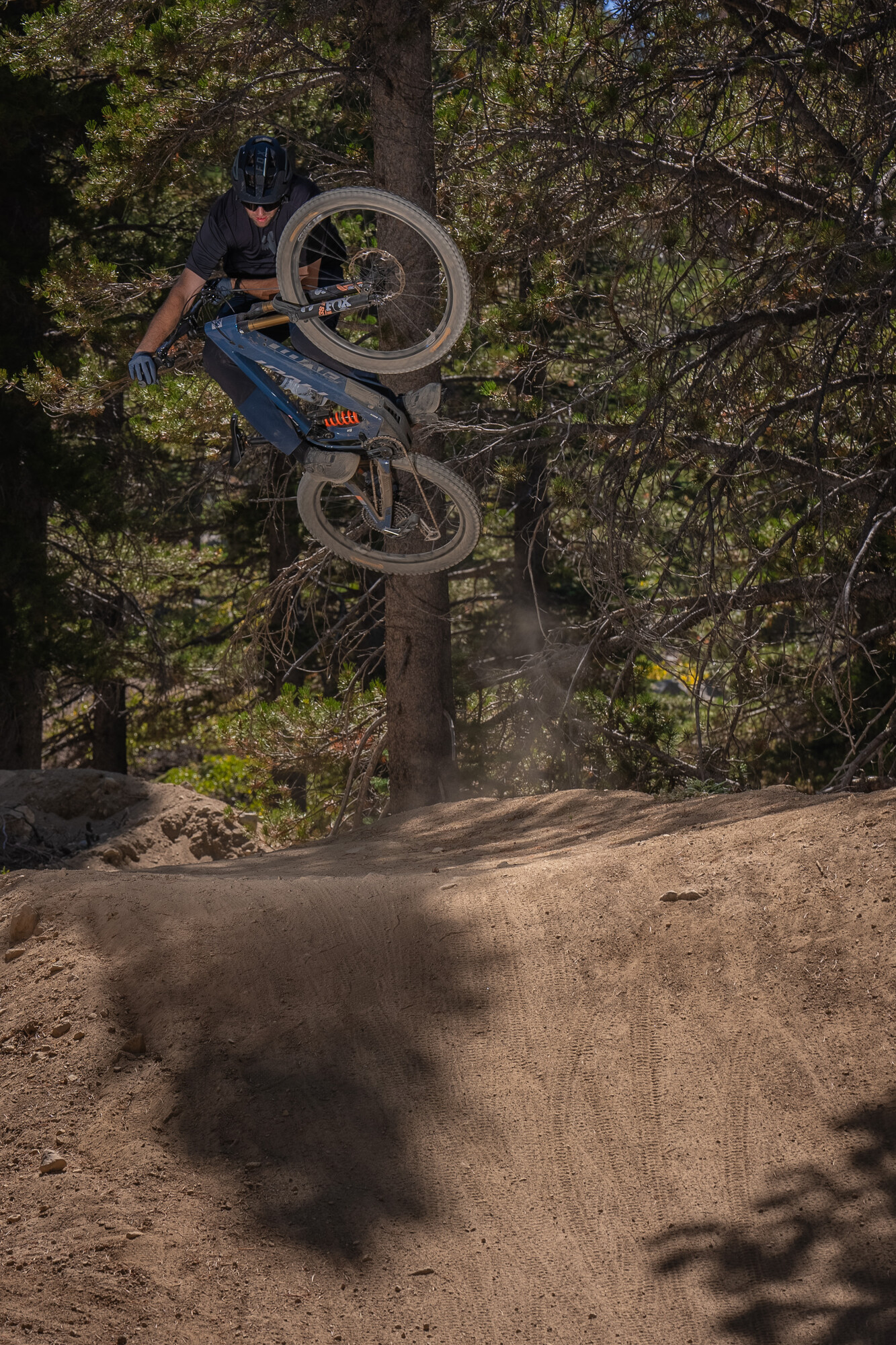
As I got into less technical terrain that allowed higher speed ascending, the suspension performance under pedaling forces began to stand out more. DW Link bikes are known for doing a great job of mitigating pedaling forces from the small bump absorption, which wasn’t so much vital to the pedaling performance with a motor to pull me along but the comfort it provided while smashing uphill certainly stood out. After a few rides I swapped out to the LiveValve Neo DHX shock to see how a coil would feel on the bike and what it did to the overall ride characteristics blew me away. I had already been testing the shock on my standard enduro bike a couple of weeks prior and felt there were some benefits under my own pedaling power, but with some assistance, it was a whole different experience. The speed at which the Shuttle LT rips uphill put a smile on my face lap after lap, but the speed at which the LiveValve shock works had me laughing in disbelief; it created such a seamless transition back and forth from the firmest possible pedaling platform to the most supple bump absorption so quickly that the bike just sat level through undulations that would normally have me bouncing off of the seat. Pointing the bike downhill on much steeper terrain than in Phoenix, the bike could sit into its travel a bit easier, and I began to notice the benefits of the mixed wheelset. Laying the bike over into turns felt effortless, and I could scandi flick and place the bike where I wanted it with ease in many instances. The front wheel felt super planted, but in some instances the rear wheel felt a little unsettled in a different way than what I’d experienced in Phoenix. This was more related to the heavier side loading I put through the bike in combination with the 2.6” rear tire which is prone to folding more heavily in these instances; I would essentially end up “shralping” turns more frequently that I was merely rolling through at trail speed where momentum was much higher. Overall, I had a blast on the steep terrain but would opt for a 2.4” rear tire if this was what my everyday ride looked like.
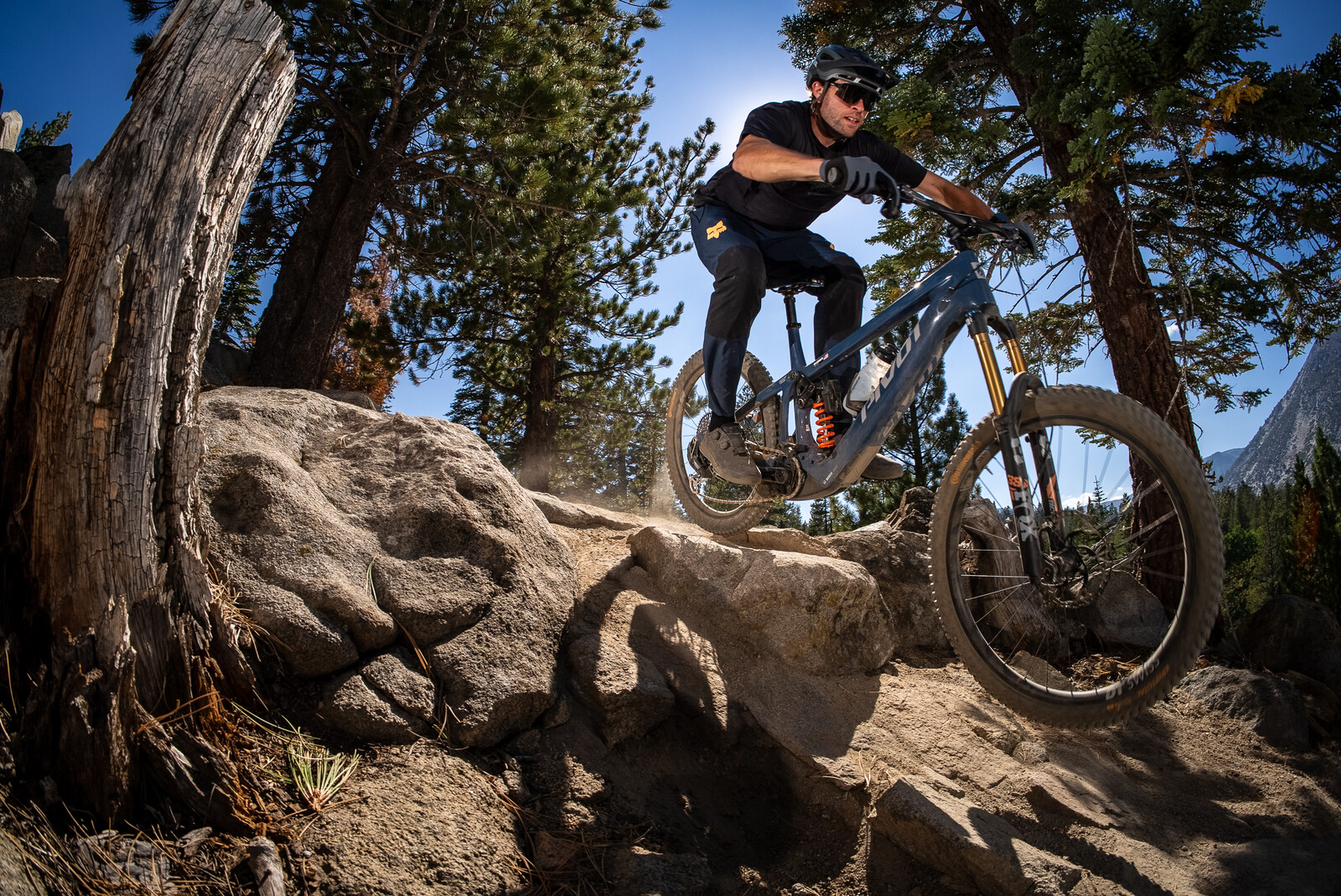
The final leg of testing wrapped up around the Lake Tahoe area, where the terrain is more desolate, dirt is much looser, and rocks are very prevalent. I spent a ton of time riding buffed-out flow trails, steep skidded lines, and epic backcountry adventures with super technical bits throughout. This is where I got to test the overall comfort of the bike for longer days in the saddle, allowing me to ride the bike through an entire battery charge and experience pedaling the bike without the motor or my beloved Race mode. Doing these bigger days in the saddle confirmed in my mind just how comfortable this bike really was to pedal; it didn’t take as much effort as my daily driver to get from point A to B, but I thought of it more as a spin bike that was really really comfortable. The top tube length keeps the bars well within reach when seated, and the seating position is upright enough to provide some great leverage against the front of the bike when things point really steep uphill. Riding in looser terrain, the Continental tires really shined through, and the 2.6” rear tire proved to be advantageous for this kind of terrain with slightly large knobs and wider spacing than the 2.4” variant would have. This additional bite at the rear made for excellent braking traction and cut through the silt in the Sierras wonderfully. My biggest day out where I actually killed the battery I was able to achieve about 25 miles and 4,700 feet of climbing which were not spent in the more power conservative settings until the last leg of the ride; not bad for carrying a 230lb guy around all day.
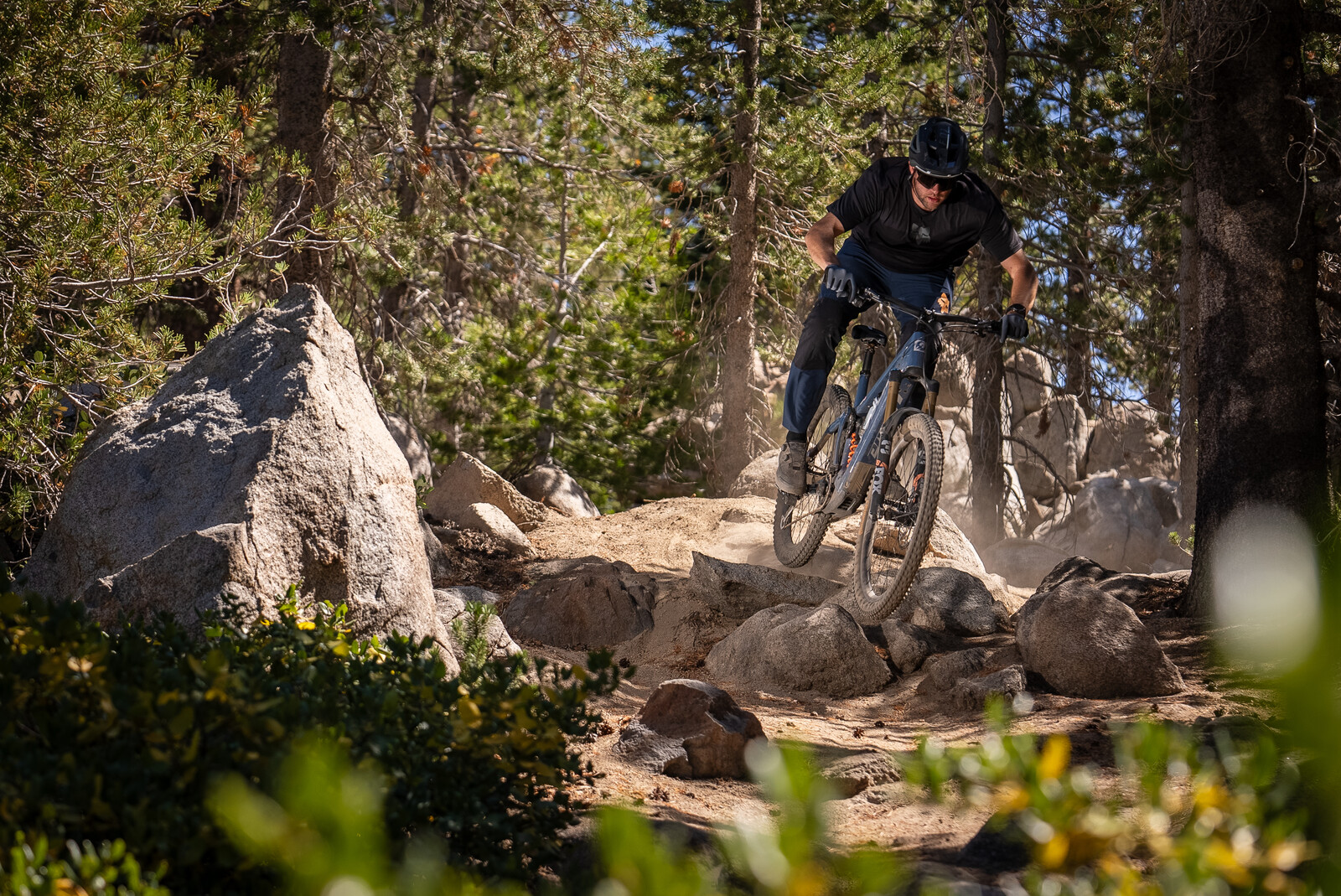
What’s the Bottom Line?
The Shuttle LT creates a comfortable platform for a wide range of skill levels and inspires confidence in everything from moderate to aggressive terrain. The bike works well at a variety of speeds when pointed downhill and feels stable without lacking a more nimble nature when pointed uphill. I thought the suspension felt great with the Float X2 bolted up, but the Neo LiveValve shock brought the bike to life even further in my experience. The improvement in descending performance could likely be achieved with a standard coil shock, but it was everywhere in between where I felt the LiveValve system excelled and, while pricy, is a worthy upgrade to consider when looking at spending some serious money in the first place. If it were mine to keep, I would likely go for the X0 level build kit with that shock upgrade, throw on some brakes with a bit more bite, and feel very little need to change anything else. Hats off to Pivot for sticking with what works on this one.
Please visit pivotcycles.com to learn more about the Shuttle LT.
View key specs, compare e-bikes, and rate the new Pivot Shuttle LT in the Vital MTB Product Guide.
About The Tester
Jonathon Simonetti - Age: 30 // Years Riding MTB: 21 // Height: 6’4” (1.93m) // Weight: 230-pounds (97.5kg)
Jonny started mountain biking in 2003 after a trip to Northstar showed him how much more could be ridden on 26” wheels than on a BMX bike. He began racing downhill in 2004 and raced for 12 years until ultimately deciding having fun on a bike was more important than race results. After working as a mechanic in the industry for a few years and developing a deeper understanding of bikes inside and out, he has an aptitude for pairing his riding ability with the analysis of bikes and breaking down what makes them work well. He spends most of his time between trail rides and skatepark sessions, with occasional days on the downhill bike.


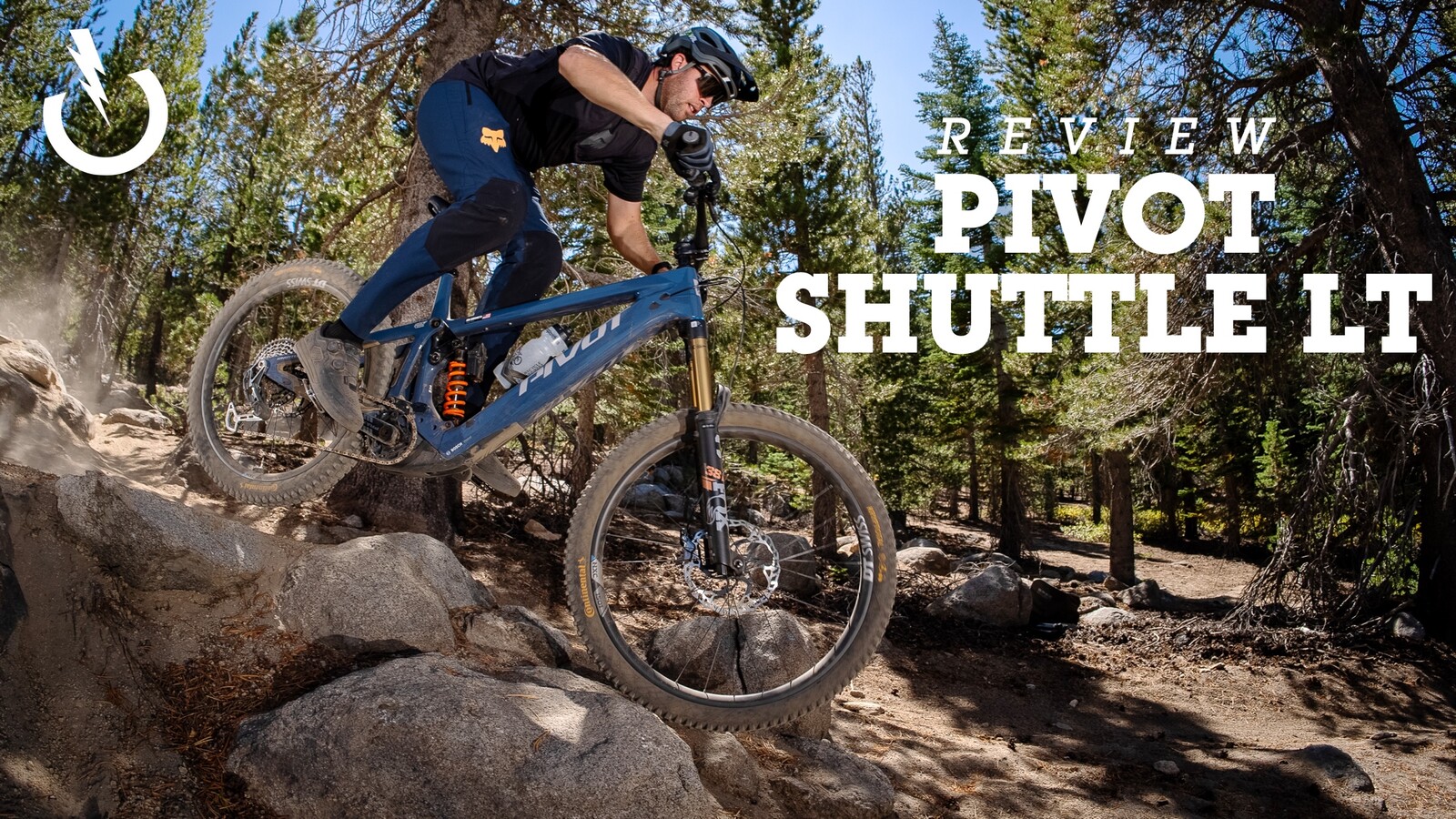



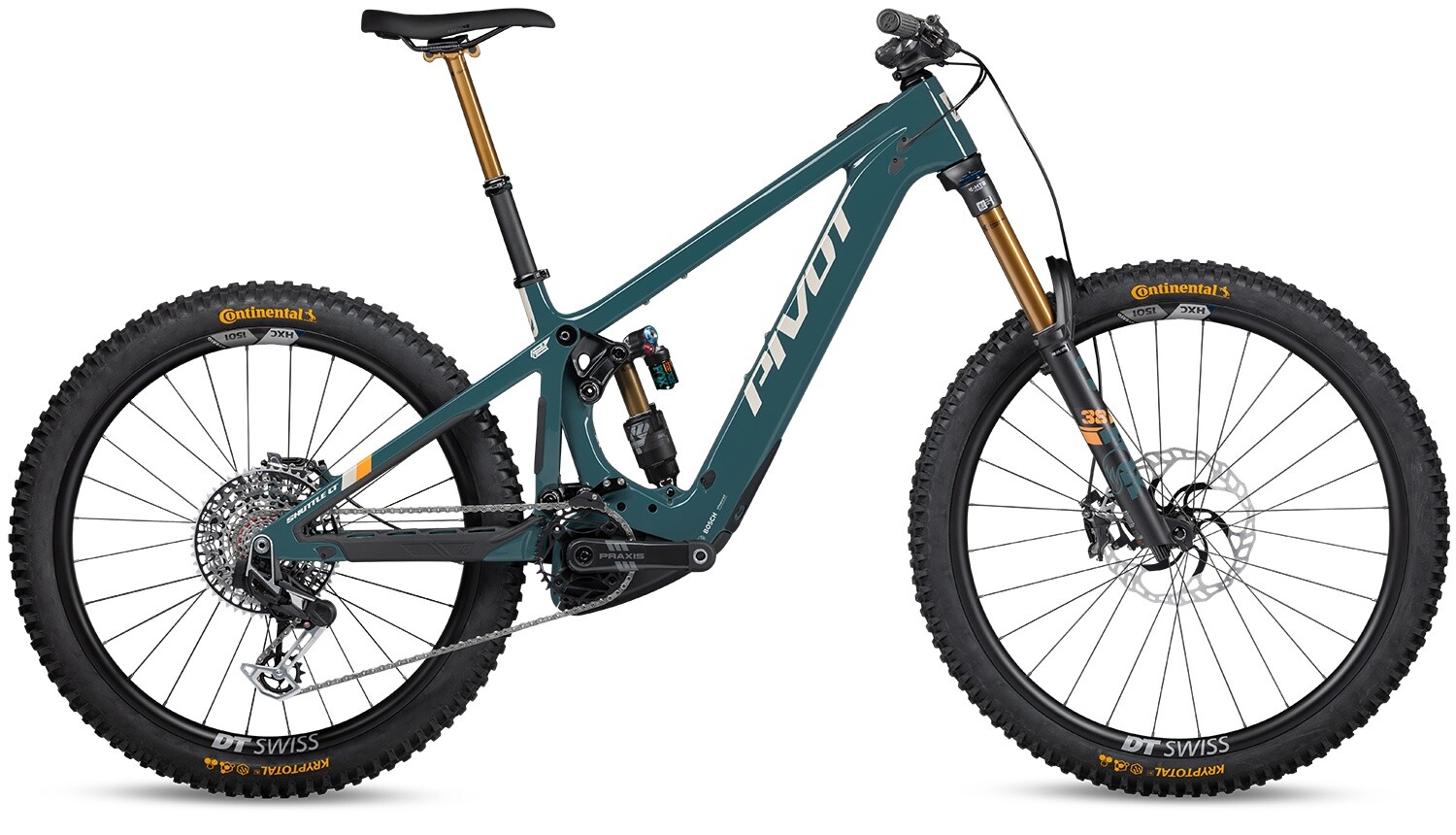
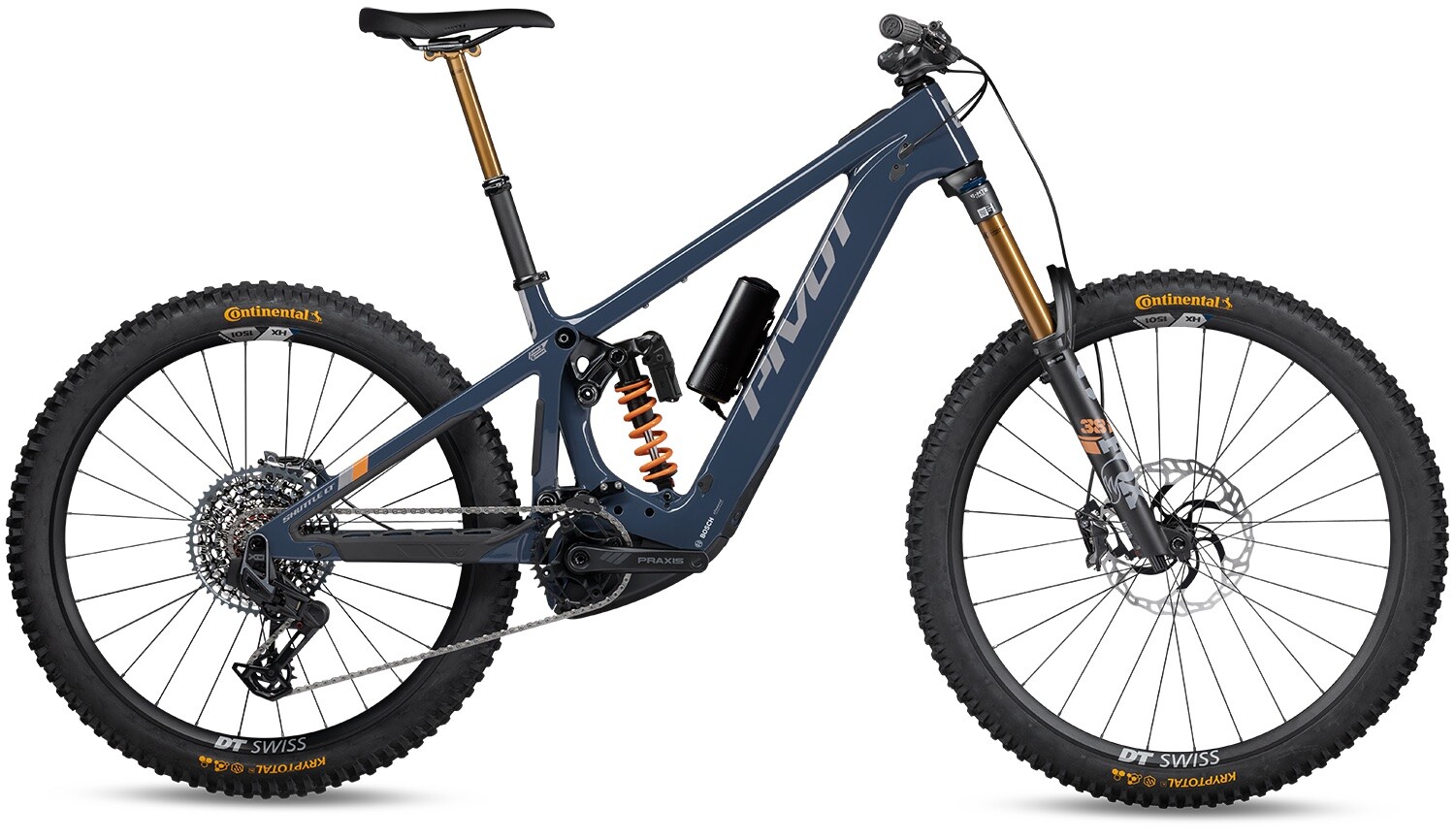



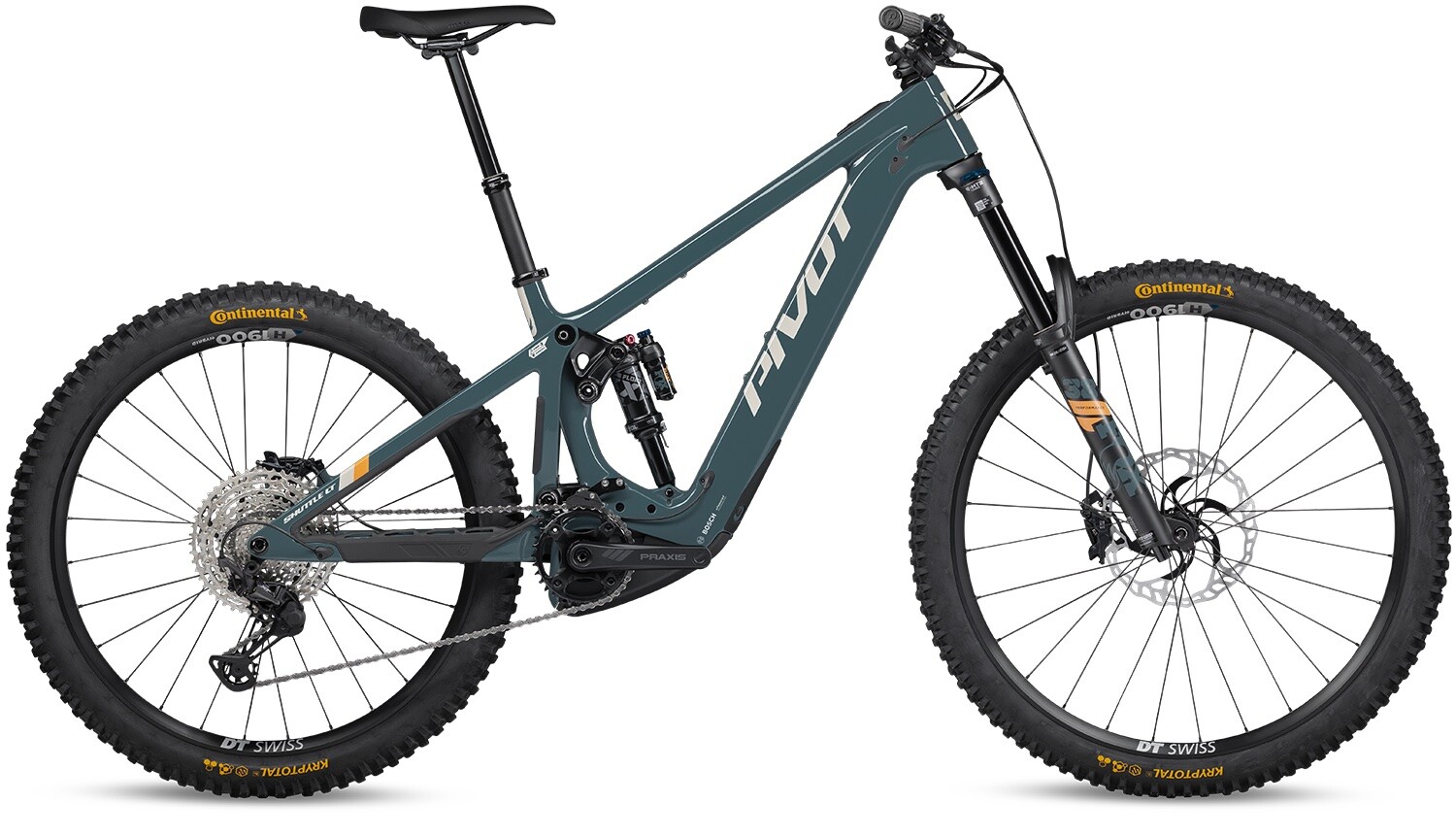




View replies to: REVIEW - Pivot Shuttle LT
Comments